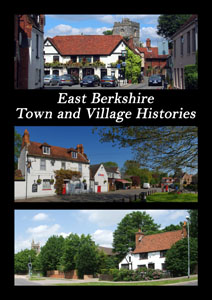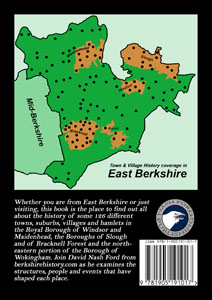 |
 |
||||||||
|
|
Cranbourne is split between the parishes of Winkfield and Windsor. The village is in the former and Cranbourne Chase or Walke is in the latter. The Chase was one of the sixteen sub-divisions of Windsor Forest and not part of the adjoining Great Park. It was unusual for its fallow as opposed to the more usual red deer. The home of the Keeper was called Cranbourne Lodge, better known today as the Cranbourne Tower. This office dates back to, at least, the reign of Henry IV, though the lodge was first built by Henry VII. The present building is mostly late Georgian. Thomas Warde was appointed Keeper in 1535. He was also Porter of the Outer Gate of Windsor Castle and, in 1543, he saved the Protestant activist, Robert Testwood, from an attack by one of the royal canons, prior to him being burnt to death as one of the Windsor Martyrs. Warde’s son later became lord of the manor of nearby Winkfield (and Hurst). King James II’s first wife, Anne Hyde, was born in the Lodge; and Samuel Pepys had an awkward meeting there with his commander, Sir George Carteret, when acting as a naval messenger. He first got lost in Windsor Forest, then, when he eventually arrived, he found the Lodge under reconstruction. Pepys had to climb up a ladder to Sir George’s bedroom, the only room in use. The knight was still in bed and was not amused by the news of an English defeat off Norway. Adjoining the Chase is the estate of Fernhill. In the 18th century, it was the last Berkshire home of the ancient Knollys family, descendants of Sir Francis Knollys, Treasurer of Queen Elizabeth I’s royal household. In the 1820s, it also became the British residence of Lord Metcalfe, the Governor General of India, who is buried in Winkfield parish church. An adjoining 18th century mansion, Cranbourne Court, was once part of the same estate. It has had various names over the years and a myriad of well-known residents, including Admiral Sir Charles Rowley, the Victorian actress Edna May and singer Rod Stewart. Bob Hope rented it in the Summer of 1961 when filming ‘The Road to Hong Kong’ and lived there with Bing Crosby and their respective families. Slightly nearer the village is Lovel Hill House. In origin, it is a Queen Anne House. Its most famous resident was the scientist and inventor, Admiral Sir Charles Knowles, an illegitimate relative of the Knollyses. Kilbees Farm, or Manor (1590), the ancient home of the Montague family who have a fine brass in Winkfield Church to one of their number who was a Yeoman of the Guard (similar to a Beefeater). An arrow kept at the farm for many years was said to have been the one that gave the place its name. It was presented, by Queen Elizabeth I, to one of the Montagues after an extraordinary feet of archery in which he shot this straight into a hive of bees. Other important houses in the area include Orchard Lea of 1884, the home of the pre-First World War army reformer, Viscount Esher and his family (his daughter, Lady Brooke, was the last Ranee of Sarawak in Malaysia); and the late 17th century Winkfield Place where Constance Spry’s cookery college began; There is also the Pump Room at the end of Winkfield Lane, dating from about 1800 when Cranbourne had its own spa. It was built above a healing well, now covered over. The upper storey of the porch, opening out onto the full-height pump room, was designed to accommodate a small orchestra: one can imagine the merriment that occurred. Ranelagh School was first founded by the Earl of Ranelagh in 1709 as the Green School at the recently demolished Cranbourne Hall. It moved to the brick primary school, with attractive cupola, in the village in 1880 and became the Cranbourne Ranelagh School. This was extended by the opening of a Ranelagh grammar school in Bracknell in 1908. Read more history of Cranbourne in David Nash Ford's book, 'East Berkshire Town and Village Histories'. Click to Order direct from the Author.
|
||||||||
| © Nash Ford Publishing 2002; Revised 2020. All Rights Reserved. | |||||||||





